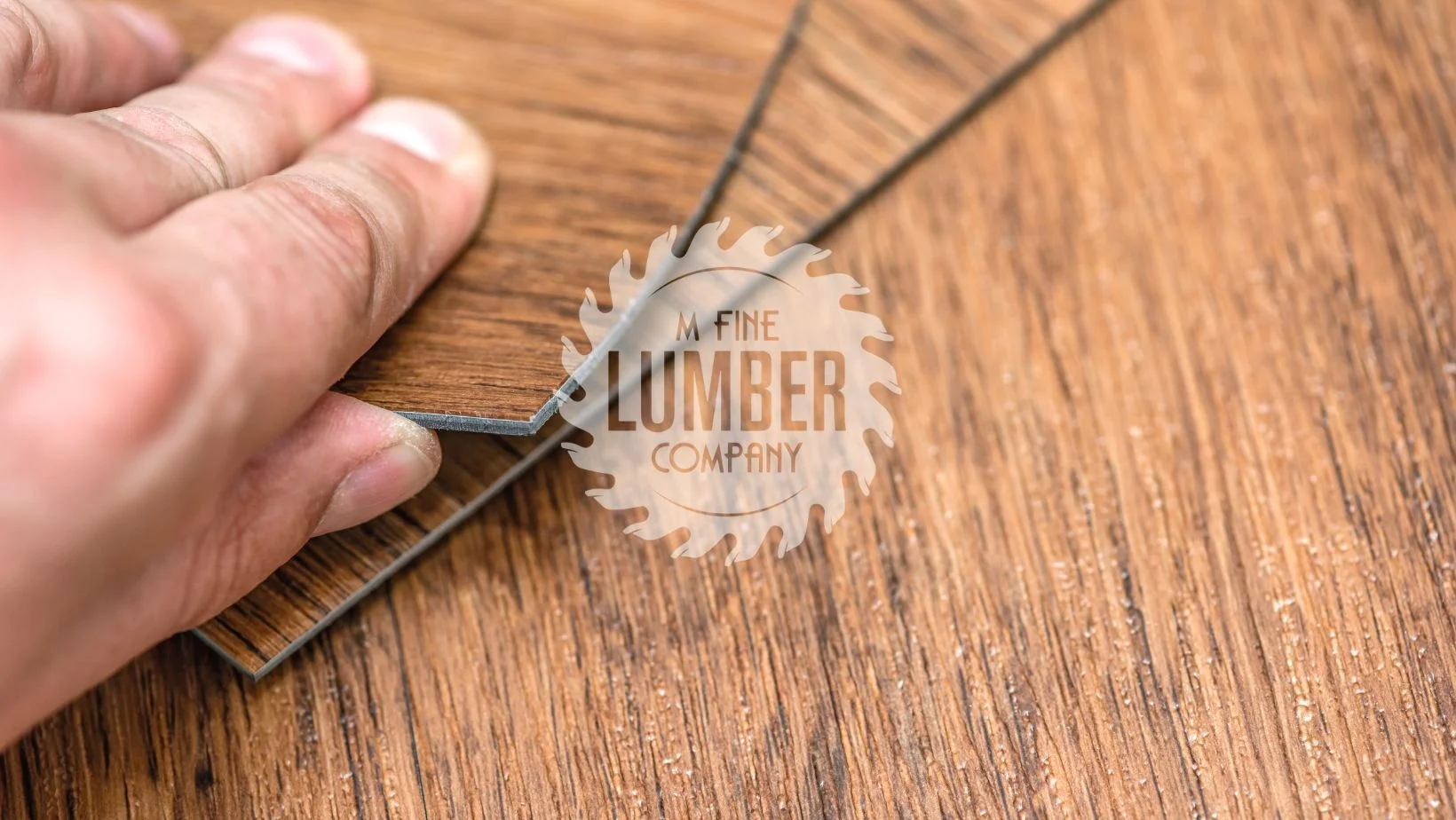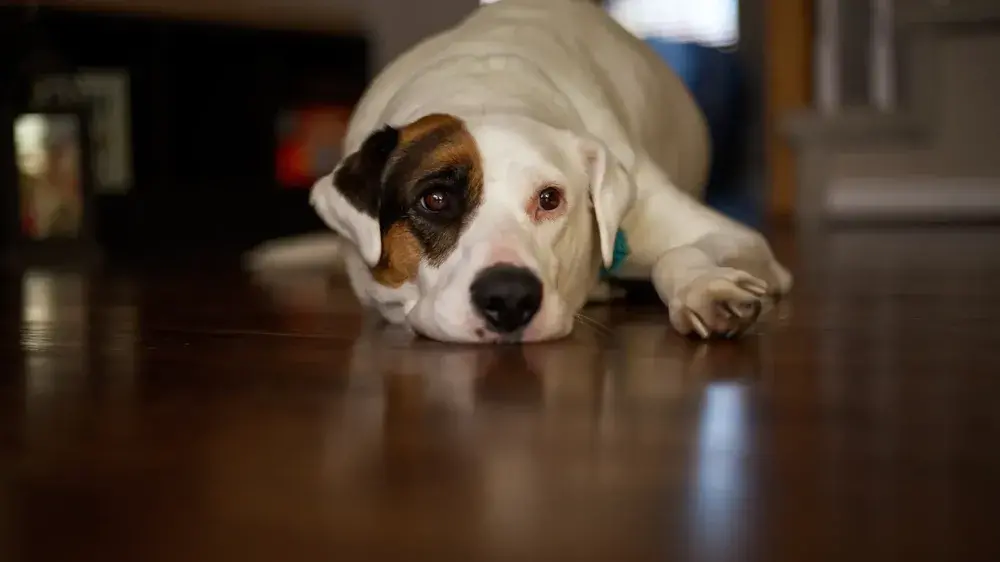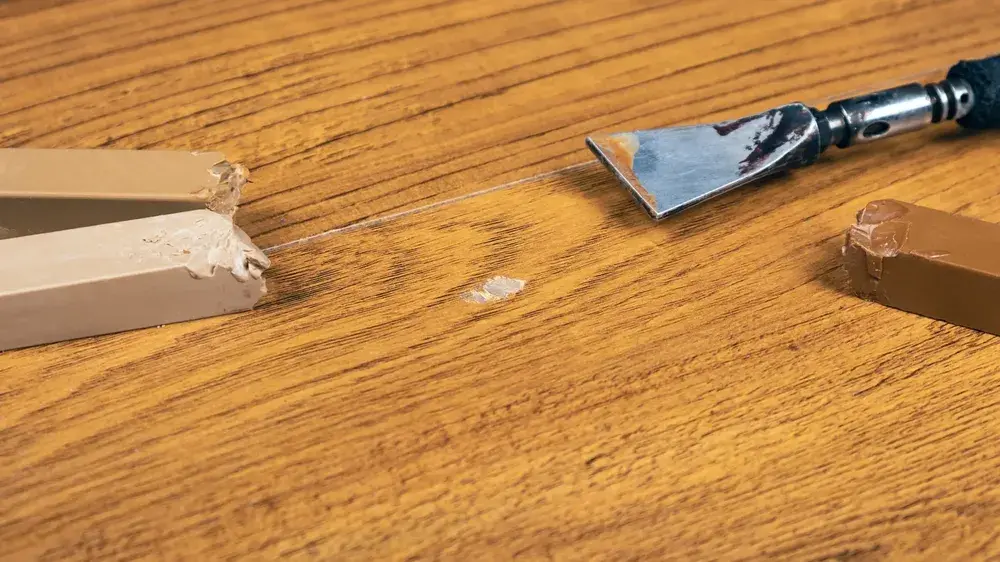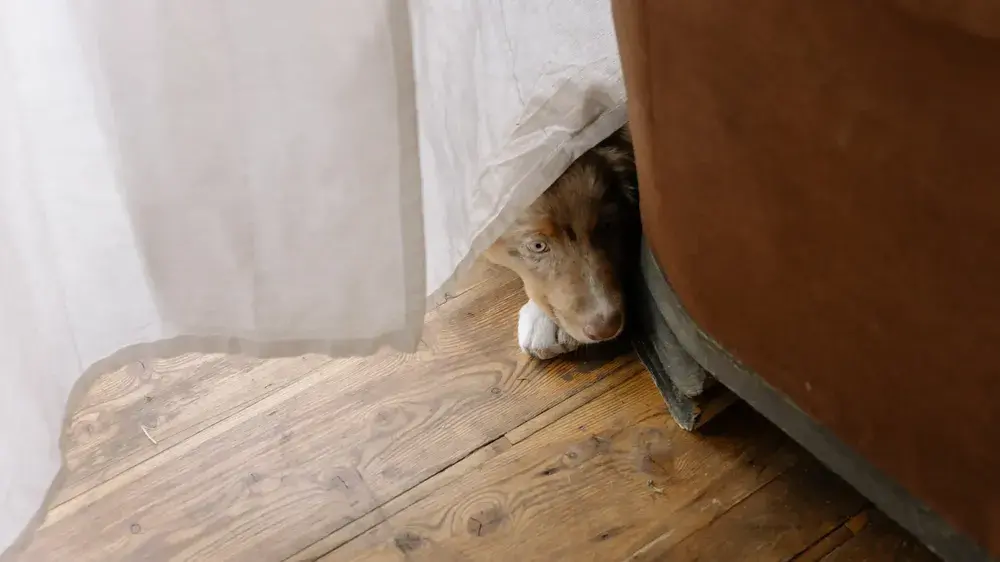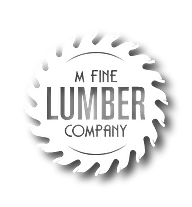Causes of Dog-Induced Flooring Damage
Dog Scratches on Wood Floor
Dogs’ claws can cause scratches on your wood floor, especially if your pet loves to play and run around the house. The hardness of your floor can determine how easily it gets scratched. Softwood flooring like pine, fir, or cedar is more prone to scratching than hardwoods like oak or maple. Also, dogs with untrimmed nails are more likely to cause scratches.
Extensive Damage from Pets
While scratches are a common issue, dogs can also cause more extensive damage to your wood floors. This might include deep gouges from chewing or even stains from accidents. Larger and heavier breeds may cause indents or depressions on the floor due to their weight. In some cases, the damage may extend beyond the surface and affect the structural integrity of the flooring.
Dog Chewed Wood Floor Damage
Chewing is a natural behavior for dogs, but it can lead to serious damage when directed at your wood floors. Dogs often chew out of boredom, anxiety, or teething. The resulting damage can vary from light indentations to deep holes, depending on the dog’s size and the duration of the chewing behavior. This type of damage can be quite challenging to repair and often requires professional help.
methods for Removing Dog-Induced Damage
DIY Techniques for Removing Dog Scratches from Wood
Luckily, minor dog scratches can often be handled with simple DIY methods. For superficial scratches, a touch-up marker that matches your floor color can be an effective solution. You can fill the scratch with the marker and then wipe off the excess with a soft cloth. For deeper scratches, you may need a wood filler. Apply the filler using a putty knife, let it dry, then sand the area until it’s flush with the rest of the floor. Finish by applying a matching stain and a coat of finish to seal the repair.
Using Wood Stain to Hide Scratches
Staining the wood can help cover up minor dings and dents on the floor. Select a stain shade that blends well with the flooring. Apply the stain with a soft cloth or a small brush and rub it into the scratch after cleaning the damaged area. Remove any surplus staining with a damp cloth and let it dry. It may be necessary to re-apply if the scratch is still visible after the first go. When you’re done and happy with the results, seal the repaired area with a clear coat.
Hardwood Floor Scratch Repair Methods
For more severe scratches on your hardwood floor, you might have to consider more comprehensive reparations. One option is to sand down the area until the scratch is no longer visible, then refinish it. However, this method should be used sparingly as it removes a layer of the wood each time and can shorten the lifespan of your floor. Another approach is to use a wax filler stick. Rub the stick over the scratch until it’s filled, then scrape off the excess wax with a plastic scraper and buff the area with a soft cloth. For the most severe scratches, replacement of the damaged plank may be necessary.
